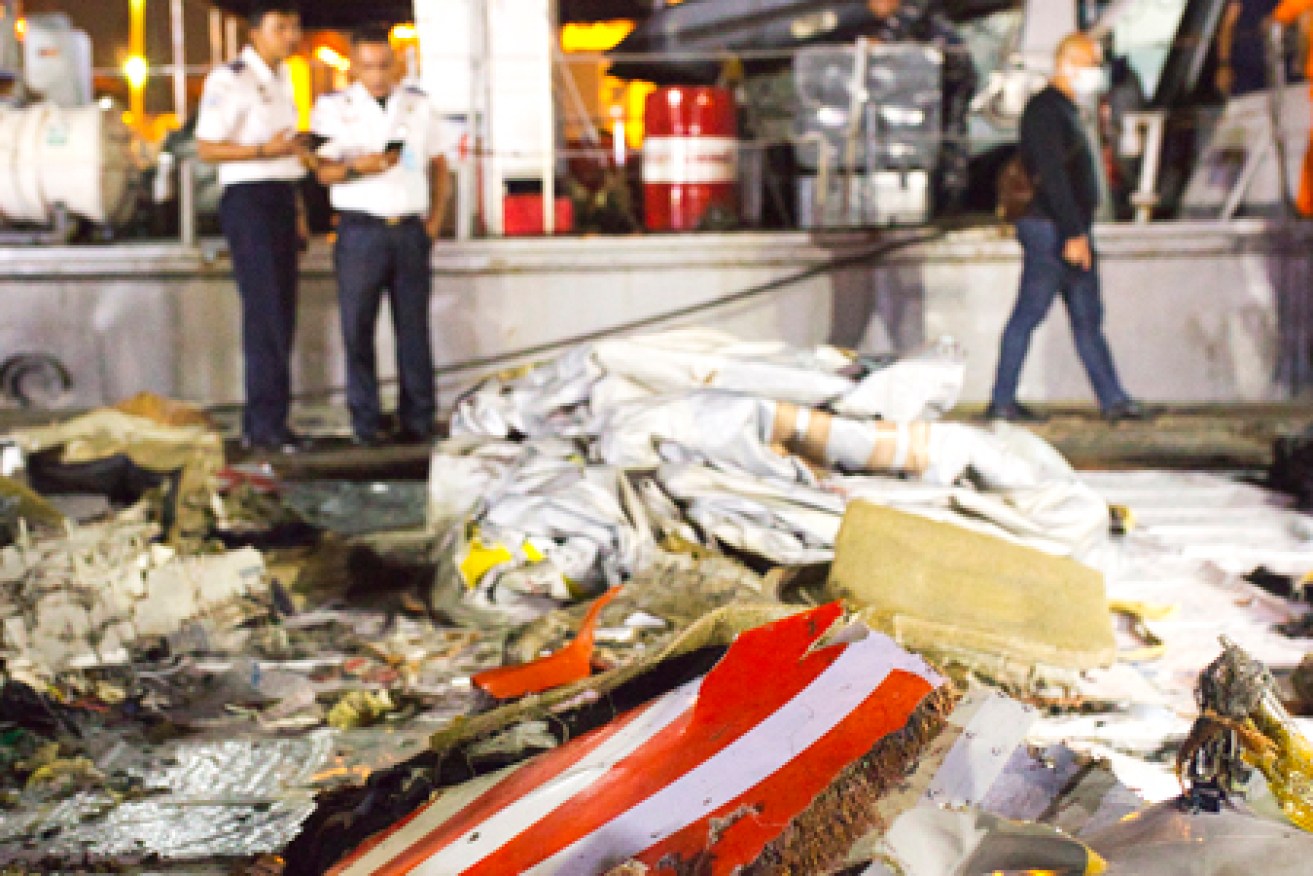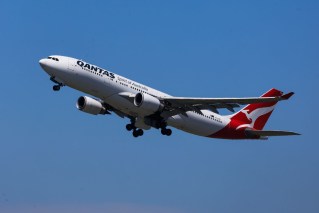Black box data reveals Lion Air pilots’ struggle to regain control

Wreckage from Lion Air flight JT 610 lies at the Tanjung Priok port. Photo: Getty
Data from the Lion Air plane that crashed into the Java Sea in October shows the pilots fought to save the plane almost from the moment it took off.
But the Boeing 737’s nose was repeatedly forced down, apparently by an automatic system receiving incorrect sensor readings.
The information from the flight data recorder, contained in a preliminary report prepared by Indonesian crash investigators and scheduled to be released Wednesday, documents a fatal tug-of-war between man and machine, with the plane’s nose forced dangerously downward more than two dozen times during the 11-minute flight.
The pilots managed to pull the nose back up over and over until finally losing control, leaving the plane, Lion Air Flight 610, to plummet into the ocean at 450 mph, killing all 189 people on board.
The data from the so-called black box is consistent with the theory that investigators have been most focused on: that a computerised system Boeing installed on its latest generation of 737 to prevent the plane’s nose from getting too high and causing a stall instead forced the nose down because of incorrect information it was receiving from sensors on the fuselage.
In the aftermath of the crash, pilots have expressed concern that they had not been fully informed about the new Boeing system – known as the manoeuvring characteristics augmentation system, or MCAS – and how it would require them to respond differently in case of the type of emergency encountered by the Lion Air crew.
“It’s all consistent with the hypothesis of this problem with the MCAS system,” said John Hansman Jr, a professor of aeronautics and astronautics and director of the international centre for air transportation at the Massachusetts Institute of Technology.
Boeing has said that the proper steps for pulling out of an incorrect activation of the system were already in flight manuals, so there was no need to detail this specific system in the new 737 jet.
In a statement on Tuesday, Boeing said it could not discuss the crash while it is under investigation but reiterated that “the appropriate flight crew response to uncommanded trim, regardless of cause, is contained in existing procedures.”
A fuller account of problems with the sensors on the fuselage, called angle-of-attack sensors, is expected to be part of a full report on the crash by Indonesian investigators. But one of those sensors was replaced before the plane’s next-to-last flight after the jet experienced malfunctioning data readings, investigators say.
“The pilots fought continuously until the end of the flight,” said Nurcahyo Utomo, head of the air accident subcommittee of the Indonesian National Transportation Safety Committee, which is leading the crash investigation.
Mr Nurcahyo said that the MCAS system had been activated and is a central focus of the investigation.
Details of the black box data were contained in a briefing for the Indonesian Parliament and were first disclosed publicly in the Indonesian media. The data was subsequently posted and analysed in a blog post by Peter Lemme, a satellite communications expert and former Boeing engineer.
Much remains unknown about the doomed flight, including why a plane that had encountered problems with the sensors was permitted to fly in the first place.
Investigators have yet to recover the cockpit voice recorder, which could provide further insight into the steps taken by the pilots and whether they followed the correct procedures. The pilot had handed control of the plane to the co-pilot just before the plane went into its final dive.
Despite Boeing’s insistence that the proper procedures were in the handbook, also called the emergency checklist, pilots have said since the accident that Boeing had not been clear about one potentially vital difference between the system on the new 737s and the older models.
In the older versions, pilots could help address the problem of the nose being forced down improperly – a situation known as “runaway stabiliser trim” – by pulling back on the control column in front of them, the pilots say.

The fateful Lion Air airliner had a history of problems. Photo: Getty
In the latest 737 generation, called the Max, that measure does not work, they said, citing information they have received since the crash. The pilots on Lion Air Flight 610 appear to have forcefully pulled back on their control columns to no avail, before the final dive, according to the information from the flight data recorder.
Dennis Tajer, spokesman for the American Airlines pilot union and a 737 pilot, said he could not comment on any aspect of the investigation. But, he said, “in the previous model of the 737, pulling back on the control column, Boeing says will stop a stabiliser runaway.”
Information provided to American Airlines from Boeing since the crash, Tajer said, “specifically says that pulling back on the control column in the Max will not stop the runaway if MCAS is triggered. That is an important difference to know.”
Boeing said in its statement on Tuesday that the existing procedures covered the latest 737 model.
Bulletins from Boeing and the Federal Aviation Administration of the United States since the crash indicate that pilots could overcome an incorrectly activated MCAS with a series of steps. First, they would have had to activate switches on the outside of the control columns in front of both the pilot and co-pilot.
Those switches are for electrically controlling the trim – the angle of the stabilisers on the plane’s tail. The pilot of Flight 610 appears to have done that repeatedly to bring the nose up, but the MCAS reactivated each time, as it was designed to do, forcing the nose back down, and the pilot had to repeat the process again and again.
The futile struggle by the pilots to regain control can be seen in colourful jagged lines in graphs contained in the report to the Indonesian Parliament, documenting the seesaw motion of the nose as the system pushed it down at least two dozen times before the plane’s fatal nose-dive.
From the moment Flight 610 took off just after dawn from the airport in Jakarta, the Indonesian capital, the Max 8 jet was recording errant data from one of the two angle-of-attack sensors on the nose of the plane that records the pitch at which a plane is climbing or descending.
Angle-of-attack sensors are crucial in determining if a plane is stalling.
Plane crashes rarely can be blamed on a single, catastrophic malfunction. More often, a problem spirals out of control as maintenance crews fail to spot or address an underlying issue and then the flight crew takes a series of steps that lead to a fatal outcome.
Lion Air, Indonesia’s largest airline, has a notoriously flawed safety record. Government investigators have accused the carrier of ignoring their commands to ground planes with proven problems.
-New York Times








